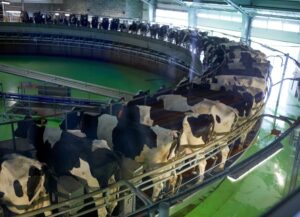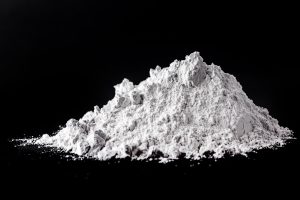Joaquín Ventura García & Fernando Diaz
Acute puerperal metritis is an acute systemic illness whose main clinical symptoms are fever and signs of toxemia due to an infection of the uterus. Metritis usually occurs during the first 21 days after calving with a peak incidence to occur at day 5 to 7 of lactation. It is characterized by an enlarged uterus and a watery red-brown fluid to viscous off-white purulent uterine discharge, which often has a fetid odor.
Infectious metritis is a prevalent and costly disease for the dairy industry around the world as it decreases production performance, survival, and welfare of dairy cows. Direct consequences of metritis are reduction in cow’s reproductive performance and milk production, as well as an increase in culling and antibiotic use, which estimate costs is about $358 per case of metritis. Given the US dairy cow population census and an average impact of metritis of 20%, US dairy industry suffers $665 million annual losses due to metritis (Soo Jin Jeon, 2018).
A German study published this year in the Journal of Dairy Science evaluated whether serum calcium concentration on days 0, 1, and 3 after calving was associated with the risk of developing metritis. The study included 4,043 Holstein cows in lactation 1, 2, 3 and 3 plus from a commercial dairy.
Cows diagnosed with metritis were treated with ceftiofur hydrochloride intramuscular for 3 consecutive days, and the uterus was infused with oxytetracycline on the day of diagnosis. Data showed the following results:
- Overall incidence of metritis was 12.0%. However, metritis was 2.37 times more prevalent in primiparous (20.4%) than in multiparous cows (8.6%).
- Serum calcium concentration, measured in blood samples collected from every cow in days 0, 1 and 3 after calving, was affected by time, parity, and metritis incidence. Average serum calcium concentration during the first three days in milk was 2.17, 2.13, 2.06, and 1.99 mmol/L for cows with 1, 2, 3, and 3 plus lactations, respectively.
- The lowest serum calcium concentration occurred on day 1 after calving in multiparous, and on day 3 in primiparous cows. Interestingly, while serum calcium levels increased in multiparous cows from day 1 to day 3, it decreased in primiparous cows.
- Considering hypocalcemia as a calcium concentration lower than 2.0 mmol/L, overall incidence of hypocalcemia reported in this study was 33.9%, and the calculated prevalence was 9.4, 10.5, and 23.6% on day 0, 1, and 3 after calving, respectively.
- The researchers found that serum calcium concentration on day 3 after calving was significantly lower in cows with metritis, and they reported a relationship between serum calcium concentration on day 3 of lactation and susceptibility to metritis. Primiparous and multiparous cows with serum calcium concentration of 2.5 mmol/L on day 3 had an 88 and 66%, respectively, lower chance of suffering metritis compared with cows with calcium concentration of 1.5 mmol/L.
- However, they could not prove whether metritis or low serum calcium concentration were cause or effect of each other.
Conclusion
This study demonstrates that acute puerperal metritis is a big problem in commercial dairies, mainly in primiparous cows. Cows with lower serum calcium concentration after calving are more likely to develop metritis. Risk factors for this disease include excessive body fat mobilization, dystocia, stillbirth, vulvovaginal laceration, retained placenta among others.
References
- Soo Jin Jeon, Klibs N. Galvão. 2018. An advanced understanding of uterine microbial ecology associated with metritis in dairy cows. Genomics Inform. 16:e21.
- L. Venjakob, R. Staufenbiel, W. Heuwieser, and S. Borchardt. Serum calcium dynamics within the first 3 days in milk and the associated risk of acute puerperal metritis. J. Dairy Sci. 102:11428–11438.
© 2019 Dairy Knowledge Center, LLC. All Rights Reserved.









